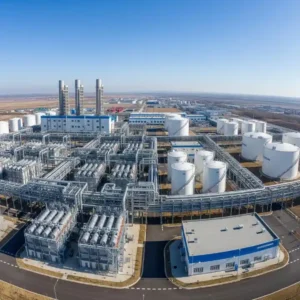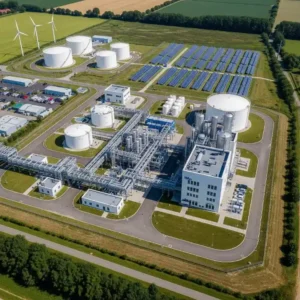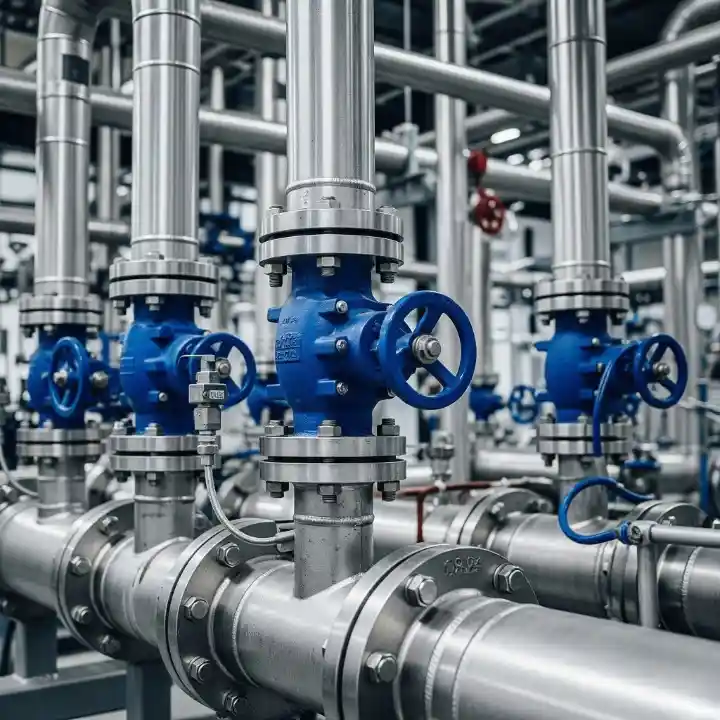For a business and finance audience, INEOS’s push toward decarbonization signals a shift in the $61 billion chemical giant’s strategy. With global markets demanding greener products, the company’s moves offer opportunities and challenges for investors and businesses.

Why INEOS’s Green Shift Matters?
INEOS, a global leader in chemicals, polymers, and oil and gas, operates 173 sites across 32 countries, employing 26,000 people. Its Hull facility, part of INEOS Acetyls, is Europe’s only industrial-scale producer of acetic acid, acetic anhydride, and ethyl acetate, chemicals used in medicines, water treatment, and food preservation. The £30 million Hull upgrade, completed in February 2025, replaced natural gas with hydrogen, cutting CO2 emissions by 75%, equivalent to removing 160,000 petrol cars from the road, per INEOS’s press release. This aligns with the company’s net-zero goal, well ahead of the UK’s 2050 target.
For businesses, INEOS’s low-carbon products enhance supply chain sustainability, meeting EU and UK environmental standards. Investors see value in INEOS’s $350 million in decarbonization projects across sites like Grangemouth and Köln. Posts on X praise the Hull project as a “real result” for sustainability, though some highlight regulatory disputes as a concern. Understanding INEOS’s strategy is key to tapping into the $5.7 trillion global chemical market’s green transition.

Strategies to Engage with INEOS’s Sustainability Push
Businesses and investors can leverage INEOS’s green initiatives with a clear game plan. Here are practical steps to consider:
-
Track decarbonization projects: Monitor INEOS’s sustainability updates on ineos.com for progress on sites like Hull and Köln. The company’s €2 billion green hydrogen investment signals further opportunities.
-
Partner with INEOS Acetyls: Explore supply contracts for low-carbon chemicals via the Sfax Chamber of Commerce or industry hubs like ChemConnect. Hull’s products serve pharmaceuticals and agribusiness.
-
Invest in green bonds: Check Bloomberg for INEOS’s potential green bond offerings tied to hydrogen projects. Similar bonds from BASF yielded 3.5% in 2024.
-
Adopt sustainable practices: Businesses can align with INEOS’s low-carbon supply chain by sourcing acetic acid for eco-friendly packaging. Visit chemanager-online.com for industry trends.
-
Stay regulatory-informed: Follow UK Emissions Trading Scheme (ETS) updates on gov.uk, as INEOS faces a £23 million ETS dispute at Hull.
These steps can help stakeholders align with INEOS’s sustainability goals while managing risks. It’s about staying proactive and diversified.
Challenges and Solutions in INEOS’s Transition
INEOS faces real hurdles in its green push. The Hull site’s 75% emissions cut triggered a dispute with the UK Environment Agency over ETS allowances, with INEOS claiming a potential £23 million shortfall if reclassified as a “new installation.” High UK energy costs, up 15% in 2024, strain competitiveness against cheaper, higher-carbon imports from China, per CEO David Brooks. Supply chain disruptions, like those at Saltend Chemicals Park, and global demand fluctuations add pressure. X posts reflect mixed sentiment, with some lauding INEOS’s leadership and others questioning regulatory fairness.
Common mistakes include businesses over-relying on single suppliers or investors ignoring regulatory risks. Here’s how to address these challenges:
-
Diversify suppliers: Source chemicals from competitors like BASF or Dow to hedge against INEOS’s supply risks. Use ChemAnalyst for market insights.
-
Monitor ETS disputes: Track INEOS’s negotiations with the Environment Agency via h2-view.com. A resolution could stabilize Hull’s finances by 2026.
-
Mitigate cost pressures: Businesses should negotiate long-term contracts with INEOS to lock in prices. Contact INEOS Acetyls via their site for terms.
-
Assess global competition: Use Indian Chemical News to compare INEOS’s low-carbon products against Asian imports for cost and sustainability.
These solutions can help stakeholders navigate INEOS’s challenges while capitalizing on its green shift.
INEOS’s Role in the Green Economy
Imagine a pharmaceutical firm in 2027 sourcing INEOS’s low-carbon acetic acid from Hull, cutting its supply chain emissions by 20%. The Hull project, using hydrogen from existing processes, sets a model for efficiency, as noted by Brooks: “It’s a blueprint for the industry.” INEOS’s broader efforts, like the €2 billion green hydrogen project in Köln, aim to reduce emissions by 120,000 tonnes annually. The company’s 300 Hull employees and 500 global staff support a supply chain serving industries from textiles to clean water.
Risks remain. The ETS dispute could delay financial benefits until 2027, per the Environment Agency, impacting INEOS’s margins. Geopolitical tensions, like U.S.-China trade tariffs, may raise import costs, affecting competitiveness. Businesses should explore INEOS’s innovation pipeline, like green ammonia production, for future partnerships. Investors can monitor Saltend Chemicals Park’s $250 million green hydrogen facility, led by Meld Energy, for regional synergies. Staying ahead means balancing INEOS’s green promise with market realities.
Conclusion: Navigating INEOS’s Sustainable Future
INEOS’s £30 million hydrogen investment in Hull, cutting emissions by 75%, positions it as a leader in the green chemical industry. Its focus on low-carbon products offers opportunities for businesses and investors, but regulatory disputes and global competition demand caution. By tracking projects, diversifying, and staying informed, stakeholders can thrive.
What’s your take on INEOS’s green strategy for your business or portfolio?
Share your thoughts in the comments or consult an industry expert to refine your approach.





